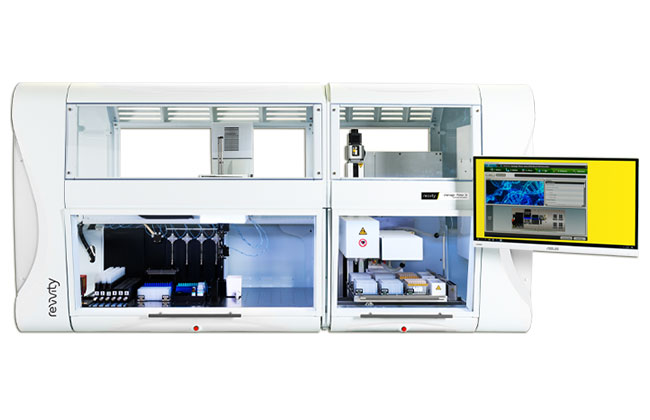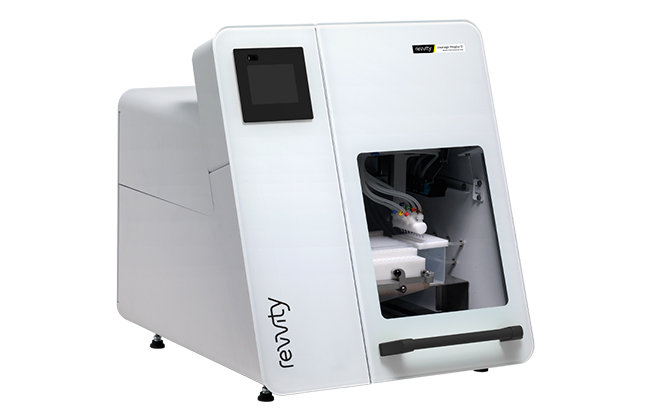Introduction
Magnetic separation technology
To ease and accelerate nucleic acid isolation based on magnetic particles, and to offer the user a highly flexible and reliable automation, chemagen has developed a unique separation method together with the Forschungszentrum Karlsruhe GmbH. The isolation of nucleic acid molecules is achieved through their capturing by highly specific binding M-PVA Magnetic Beads that are subsequently attracted to metal rods transiently magnetized by an electromagnet. The magnetized rods transfer the M-PVA Magnetic Beads through the different process solutions, avoiding potential sample cross-contamination by not transferring any liquid. The rod rotation is switched on after deactivation of the electromagnet, leading to efficient and homogeneous resuspension of the particles during the sample resuspension and the subsequent washing steps. The procedure results in high yields of pure nucleic acids, low levels of fragmentation of the nucleic acid molecules, and success in all types of downstream applications.
Magnetic bead-based DNA and RNA isolation with chemagen technology
Magnetic bead-based DNA and RNA isolation with chemagen technology
Einleitungstext
The animation above shows the separation process as implemented in the chemagic™ instruments. In the first step, the rods take up tips to protect them from contamination through sample material or resting particles. The next step is the attraction of the M-PVA Magnetic Beads that are subsequently immersed in the sample solution during the third step. Here, while the electromagnet is switched off, the M-PVA Magnetic Beads are rotated off the rods and bind to the DNA and RNA. After the binding, the electromagnet is switched on again and the nucleic acid molecules associated with the particles are attracted to the rods. Step four consists in the washing procedure that is repeated several times according to the protocol. The elution of the nucleic acids in step five takes place in the same way as the previous steps. During the rod rotation the nucleic acid molecules are eluted from the beads that are thereafter removed by attracting them to the magnetized rods again. In the last step, the tips are automatically removed from the rods and the beads are thereby discarded.
Einleitungstext
The Realization
For more information
For more information, please download the brochures below or contact us.
For research use only. Not for use in diagnostic procedures.
Please note that product labelling (such as kit insert, product label, and kit box) may be different compared to the company branding. Please contact your local representative for further details.





